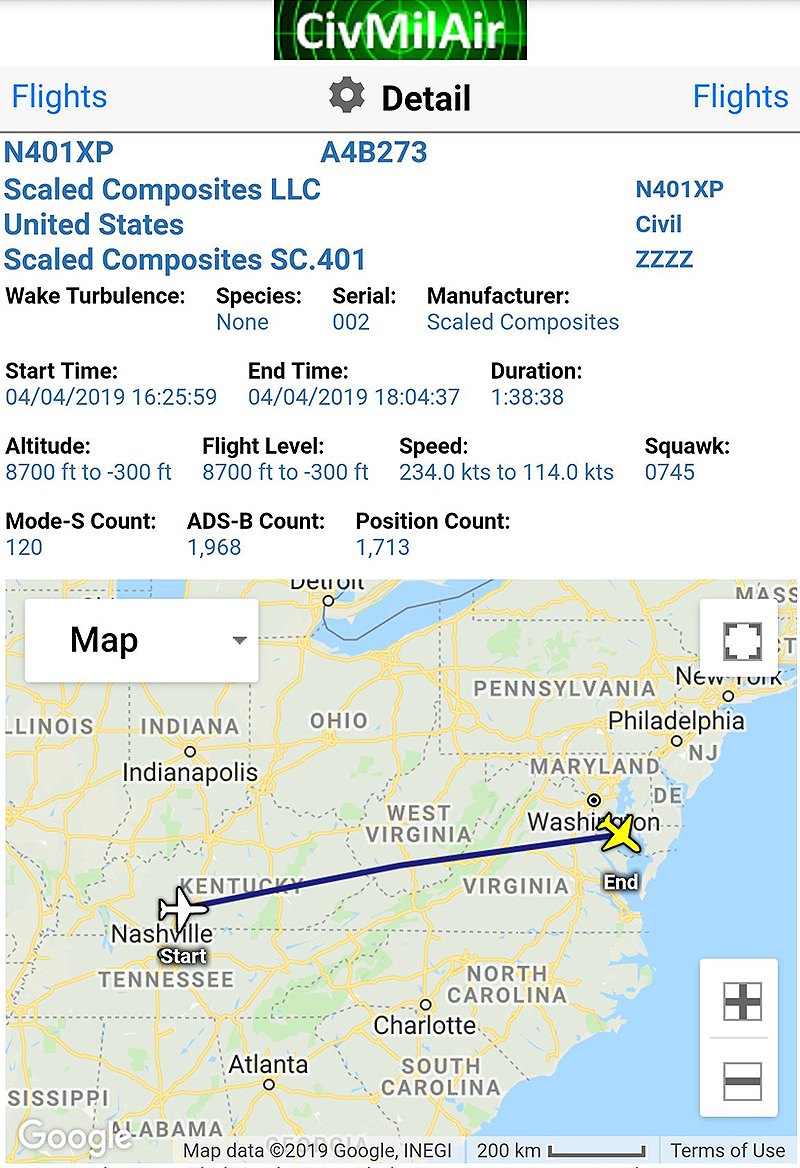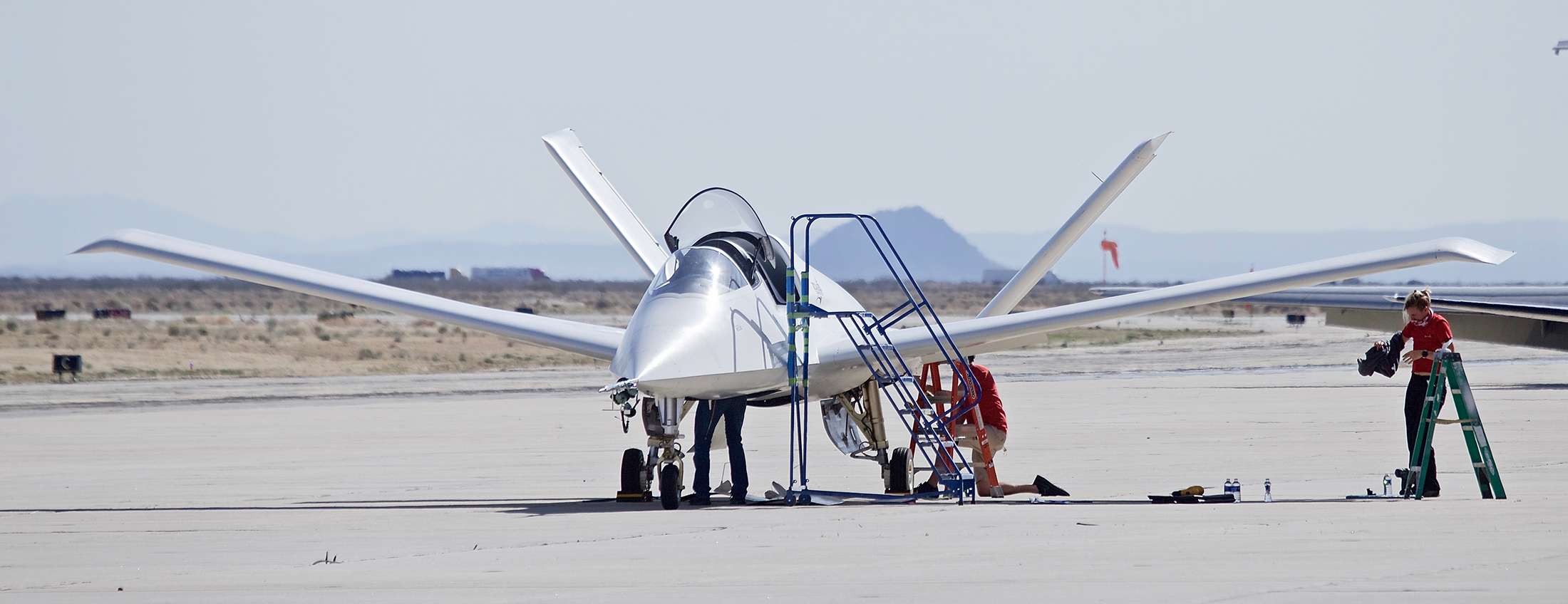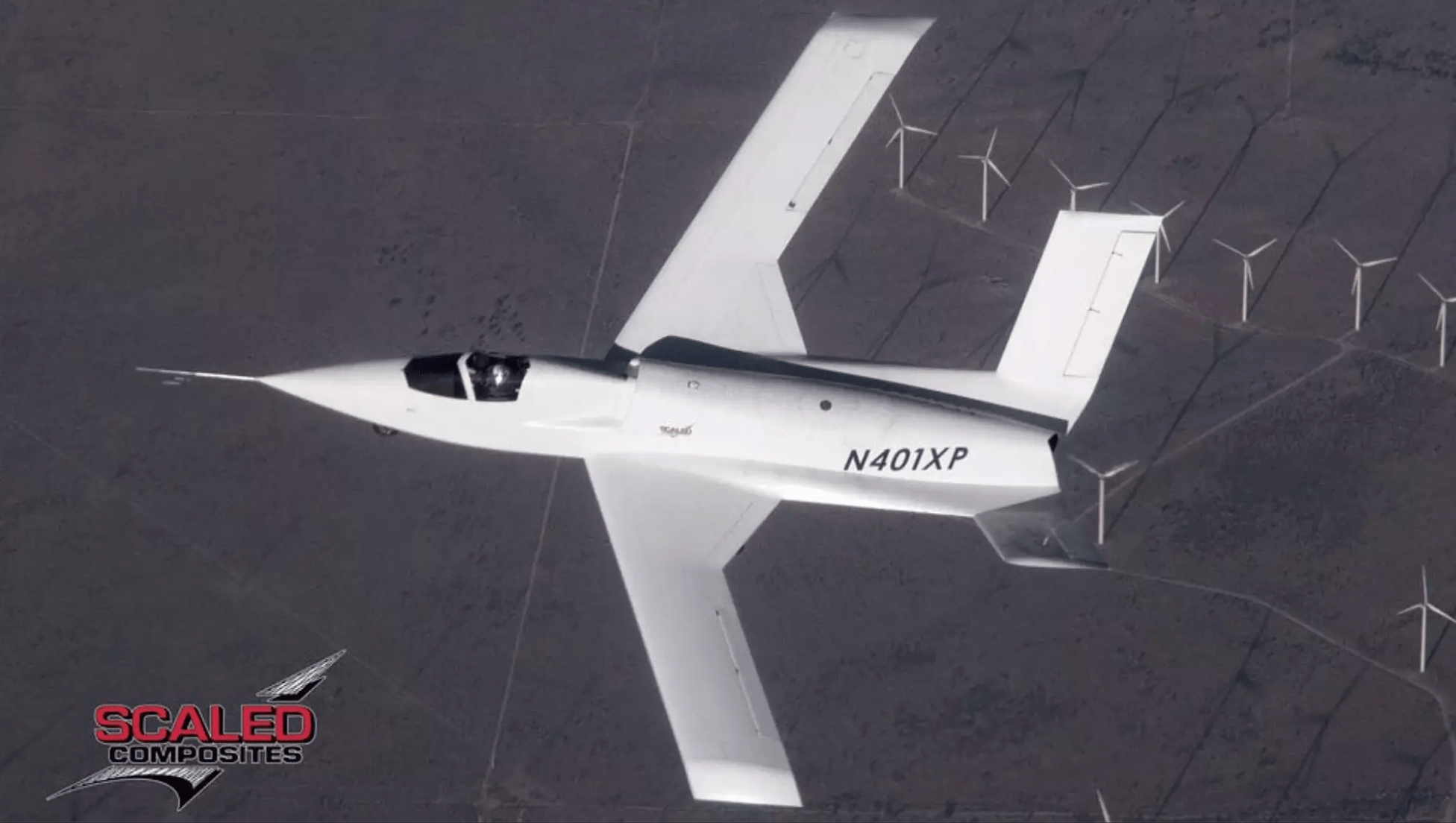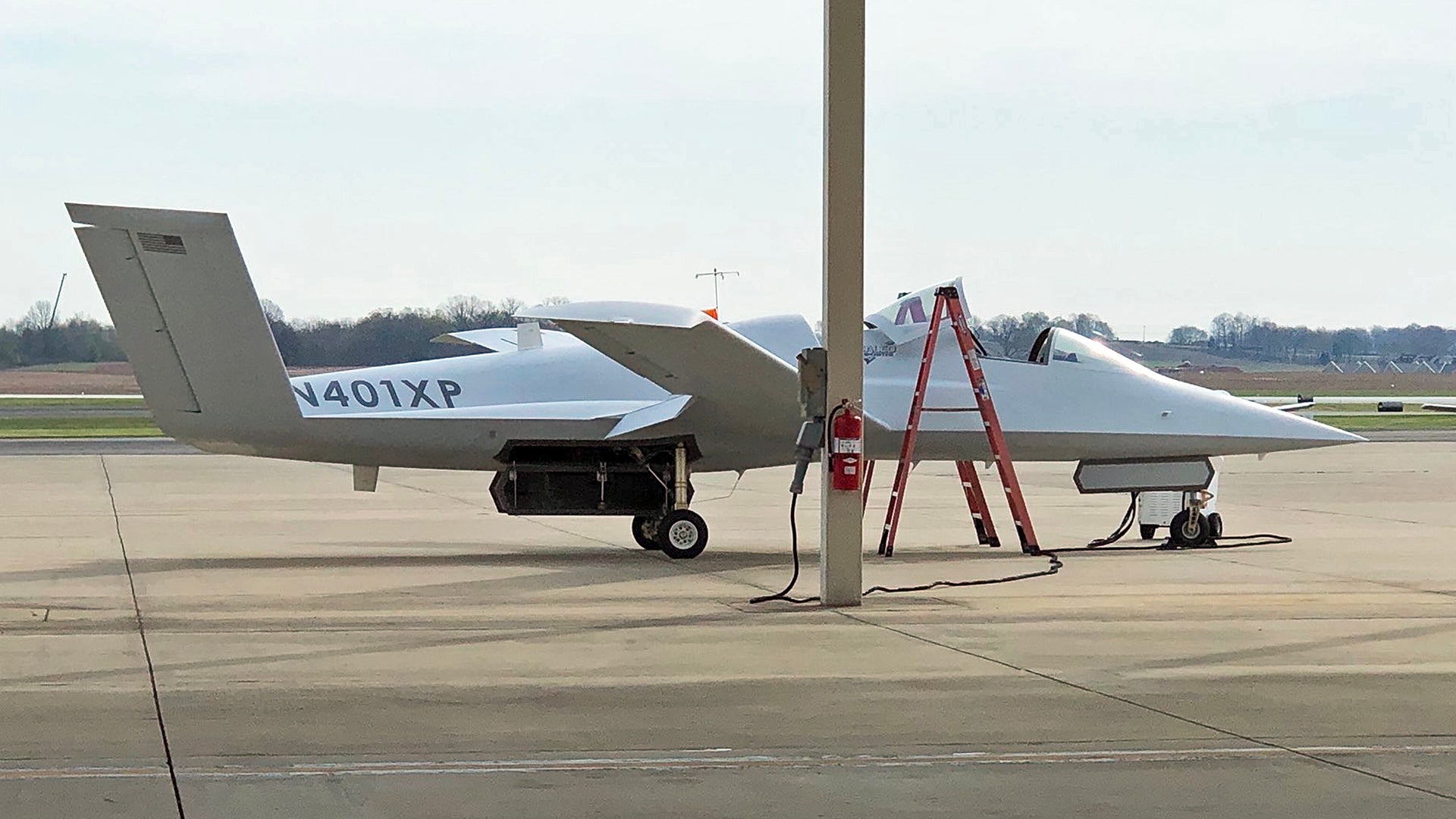Scaled Composites Model 401, an exotic, stealthy jet aircraft with a dorsal air inlet, trapezoidal “Lambda” wings, chined edges, and a big V-tail has flown from the company’s base in Mojave, California across the country to Naval Air Station Patuxent River in Maryland. “NAS Pax River,” as it is often called, is the Navy’s premier aerospace test base, roughly akin to Air Force’s Edwards AFB in California. The long trip comes 18 months after the type’s first flight and could help to finally shed some light as to what the aircraft’s mission is and who its intended owner is. It also serves as proof that the design has matured to the point where cross-country flights are not an issue.
One of two Model 401s in existence stopping off for gas in Bowling Green, Kentucky on its way to NAS Pax River. What a crazy plane to have show up at your FBO!:
Our good friend @CivMilAir helped us track the jet after it left Bowling Green and headed further east, terminating its flight at NAS Patuxent Maryland.

Since its first flight, nearly no new details have been officially released about the Model 401’s mission or its intended customer, aside from the fact that it and its sister ship were indeed built for an external entity. The famed aerospace design firm’s original statement read:
“Scaled Composites is proud to announce the rollout and first flight of its most recent project, experimental aircraft Model 401. Scaled worked with a proprietary customer to build two vehicles to demonstrate advanced, low-cost manufacturing techniques and to provide aircraft for research flight services to industry partners and the United States government. The two vehicles were designed to be identical in outer mold line and performance, with each aircraft powered by a single Pratt & Whitney JTD-15D-5D engine with 3,045 pounds of thrust.
The vehicles are capable of flying Mach 0.6 with a service ceiling of 30,000 feet and have a wingspan of 38 feet and are 38 feet long. They have an empty weight of 4,000 pounds and a maximum take-off weight of 8,000 pounds with an endurance of up to three hours. Aaron Cassebeer, Project Engineer said, “This is such an exciting time for us. Scaled is at the forefront of experimental aircraft development and I am fortunate enough to have a front row seat.” He went on to say this about the mission, “Today was a great day for our test team. We had a great flight and we are looking forward to the future test program.” This successful first flight is the beginning of the flight test phase for vehicle number 1. The Scaled team plans to continue envelope expansion on the first aircraft as they move toward first flight of the second Model 401 vehicle.”
Still, Scaled Composites’ corporate silence doesn’t mean that new facts haven’t emerged. We have kept a very close eye on the aircraft and have discovered a bunch of information about its lineage that seems to point towards unique possibilities as to its intended purpose.
Above all else, we discovered it is called “Son Of Ares,” with each aircraft being named after the Greek gods of fear and terror Phobos and Deimos. Ares was Scaled Composites’ light close air support prototype from 30 years ago that ended up being turned into a small but highly adaptive testbed for sensor, communications, and avionics technologies, many of which had to do with unmanned aircraft. You can read all about this in these two prior exclusives of ours.
The War Zone obtained also show large cavernous equipment bays located on the bottom of the aircraft’s fuselage. This would point to the possibility that this aircraft could be reconfigured to carry various types of sensor payloads—a feature that is not uncommon on Scaled Composites aircraft. Its upward canted wings may also be indicative of a platform optimized for carrying sensors as it would help keep its target within a sensor’s field of view during banking turns.

It appears to be a somewhat stealthy design, which would indicate that it has some level of enhanced survivability when operating over or near contested territory, or at the very least, wherever it is intended to be operated could be sensitive in nature. As we noted when it was initially unveiled, its design is remarkably similar to General Atomics’ Predator C/Avenger unmanned aircraft, a plane that also designed with some level of low-observability in mind. It also shares similar attributes with past technology demonstrators, such as Tacit Blue and Bird Of Prey.
So, the big question is why would this aircraft fly across the entire country to NAS Pax River? Did the Navy order these aircraft? If so, for what purpose? Are they to become test aircraft that act as surrogates for new sensors? Are they to be used as training aids to replicate the capabilities of penetrating unmanned surveillance aircraft like the RQ-170 Sentinel or Q-11 Avenger during exercises? We know that manned platforms with similar performance as advanced unmanned aircraft currently in service have acted as stand-in surrogates for training exercises. We have also speculated that the aircraft could be optionally manned, similar to the company’s innovative Firebird design.

With this in mind, maybe U.S. Navy Special Warfare Command has decided to procure a manned aircraft that can easily stand-in for unmanned aircraft during testing and training missions. Clearly, overwatch and airborne intelligence collection has become a very important part of special operations. Most famously, the RQ-170 kept watch on Bin Laden’s compound and was overhead relaying video during Operation Neptune Spear—the SEAL Team Six raid to capture or kill the terrorist mastermind.
It’s also possible that it is just visiting the base for some unknown reason. But that’s a long and expensive flight for such an aircraft to make just for show and tell.
We have reached out to NAS Patuxent River for more information, we will let you know what we hear back.
Contact the author: Tyler@thedrive.com
